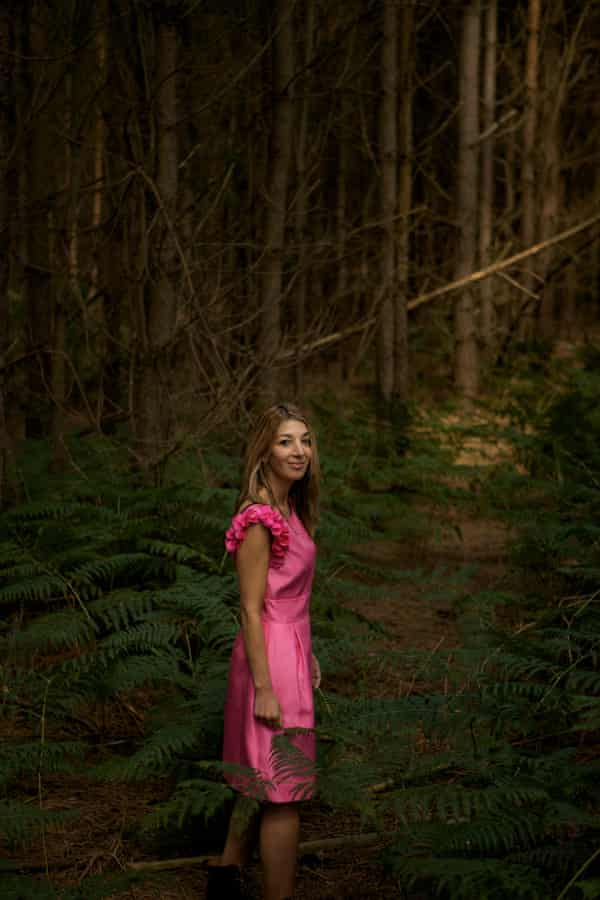Artists whose careers began in electronic music are often portrayed – sometimes deliberately – as distant, detached figures. Mira Calix, the artistic moniker of Chantal Passamonte, who died this weekend aged 51, was the absolute opposite of that. She was as warm, generous and humane as her art, which spanned sound installations – some seen by hundreds of thousands – soundtracks, scores and sculptures, as well as studio albums and many collaborations.
Born in Durban, South Africa in 1970, Calix moved to the UK in 1991, becoming a central figure in the then-nascent Sheffield electronic label, Warp Records. She co-compiled two of its agenda-setting early compilations (1995’s Blech and 1996’s Blechsdöttir – the latter named by Calix in tribute to one of her heroines, Björk) before becoming a DJ, then a fascinating experimental composer.
Calix’s first major work was an orchestral version of 2002’s NuNu, which she premiered with the London Sinfonietta a year later, before touring it internationally. It involved a tank of amplified insects, chirruping around electronics and shivering orchestral strings. Projected around auditoriums in surround sound, the effect was both mesmerisingly beautiful and eerily nostalgic.
After that, other commissions – many of them winning prizes – came thick and fast. In 2008, she set Shakespeare’s Sonnet 130 for Opera North; she would later write emotional scores for the Royal Shakespeare Company’s productions of Julius Caesar and Coriolanus, showing her facility as a writer for brass and electronics together, as well as string quartet and soprano.
Calix especially loved working on projects that could be enjoyed by the wider public. Her 2009 sound installation with United Visual Artists, Chorus, encouraged her in this regard: an extraordinary installation of swinging pendulums, emitting light and the sound of singing voices, strings and woodwind, one of the most haunting works of that kind I’ve ever seen.
One of the most magical moments she had “ever had as a musician,” she told me in 2012, was when she was installing Chorus in Durham Cathedral three years earlier. An elderly man and a very frail woman had been sitting there, quite by chance, then came up to her, asked if she had made it, and the man started to cry. The woman – in her 90s – said it was the most amazing thing she’d experienced in her whole life. “Then we were all crying!” Calix said.
That experience made her think about how public art is often characterised as inaccessible, she told me – in what I’d come to discover was her always open-hearted, accessible manner – when public art often is anything but. “What was incredible to me was that the whole piece was completely abstract, but it made them feel something. They didn’t say, this is too weird. This very old woman didn’t think about the technology … that wasn’t a barrier to her at all. It cemented this in me: that people like fantasy … people also like fairytales. And they like abstractions. Art isn’t just for arseholes. People can handle it.”
The idea of people being involved in artworks also inspired Calix. In 2012, she created Nothing Is Set in Stone for the Cultural Olympiad: a huge singing egg in Fairlop Waters, a park at the north-eastern edge of London, made out of stones that obscured 22 speakers inside. They responded to the proximity of people.
She picked the site partly because she knew there had been no public art there before. “I like people coming across something with no expectations. They don’t care who made it, they haven’t gone and bought a ticket, so it’s not about being reverential … something [has been brought] into their afternoon that they didn’t plan for, and hopefully [it captures] them, making them feel something. I find that really motivating.”
Calix also hated music being presented as something only certain people could experience and understand. “What I want to do more than anything is remove the barrier that says: ‘I don’t get this’.”
Her projects continued to be inventive, and went international. For the 2015 Sydney festival installation, Inside There Falls, she hid speakers in hand-crushed paper, as well as the costumes of dancers, encouraging participants to wear paper suits and immerse themselves in the mobile sound installations. A year later, she created the first ever public artwork in Nanjing, China: Moving Museum 35, a mixed-media sound artwork on a commuter bus.
Her 2018 work for Beyond the Deepening Shadow: The Tower Remembers, attracted her largest audience yet: 300,000 people over seven days. A setting of a sonnet by early 20th-century poet and war nurse, Mary Borden, she worked with singing collective Solomon’s Knot and musician Laura Cannell to make her incredible sound installation at the Tower of London, as its moat fluttered with candles marking the centenary of Armistice Day.
Calix was also a hardy political campaigner. She constantly championed women in music, including in her work with the Ivors Academy; she was also the driving force of the 2019 campaign the journalist Luke Turner and I worked on to save BBC Radio 3’s show Late Junction, working full-pelt to gather her many friends and collaborators from her career to the cause. More recently, she worked hard to expose the effects of Brexit, and the horrors occurring in Ukraine, including on social media; her 2021 album, Absent Origin, was full of ideas that underlined her feminism and internationalism.
It was also a hopeful record, a fascinating reassembling and reimagining of her work over the last decade. “After periods when many things break down,” she wrote in its liner notes, “new things need to be made”. It is devastating to think of that album as her final statement, but its message is something to hold on to, take into the world, and encourage people to hear. We should do the same with the music Calix left us, so full of life and love.

